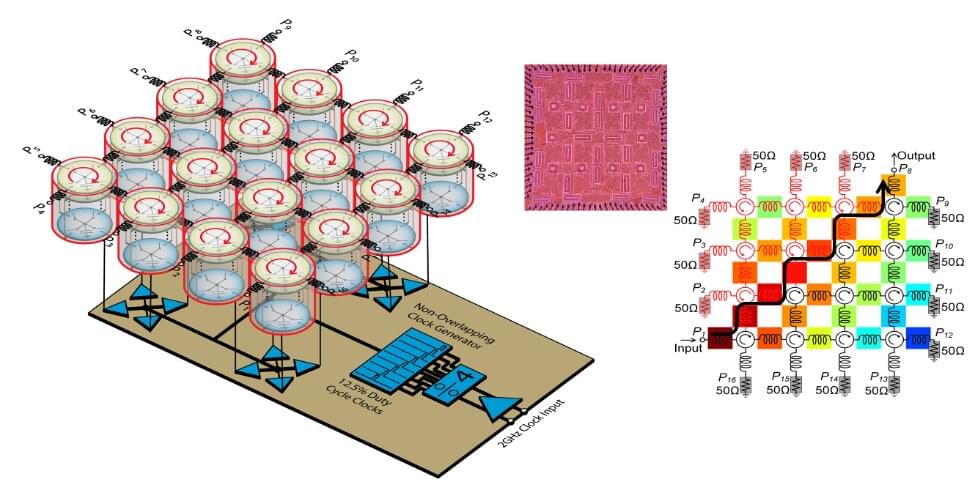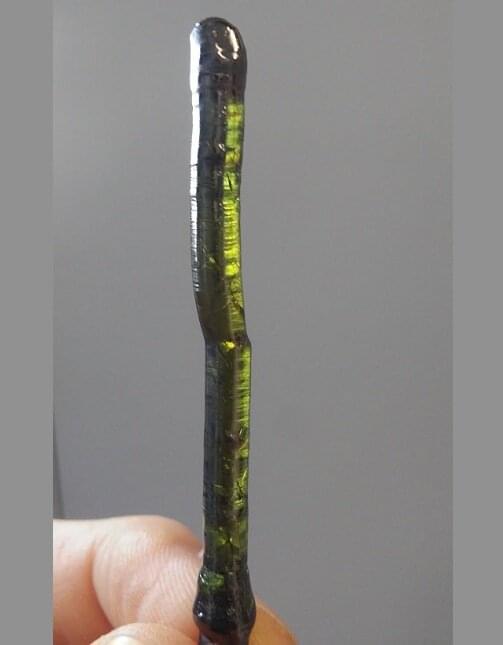Lensless cameras have many potential use-cases but have generally been held back by lengthy processing requirements and low-resolution images. A research from a team at the Tokyo Institute of Technology is looking to change that.
Get the latest international news and world events from around the world.



Costa Rica declares state of emergency over ransomware attack
Costa Rica has declared a state of emergency after ransomware hackers crippled computer networks across multiple government agencies, including the Finance Ministry.
The official declaration, published on a government website Wednesday, said that the attack was “unprecedented in the country” and that it interrupted the country’s tax collection and exposed citizens’ personal information.
The hackers initially broke into the Finance Ministry on April 12, it said. They were able to spread to other agencies, including the Ministry of Science, Technology and Telecommunications and the National Meteorological Institute.
TOP 5 Artificial Intelligences of 2022 — Flamingo: Human Level AI?
The first 1,000 people to use the link or my code ainews will get a 1 month free trial of Skillshare: https://skl.sh/ainews05221
Has human level AI been reached in 2022? What are the best Artificial Intelligences released by the biggest AI companies so far? All of this in the top 5 best AI’s in 2022.
–
TIMESTAMPS:
00:00 Intro.
00:19 #5 GPT-3
03:10 #4 Gopher.
04:40 #3 Codex.
06:01 #2 DALL-E 2
07:33 #1 Flamingo.
–
#ai #top5 #futurism

New tech can double spectral bandwidth in some 5G systems
Some materials, like wood, are insulators that block the flow of electricity. Conductors, such as copper, allow for electricity to flow through them. Other materials—semiconductors—can be either/or depending on conditions such as applied electric field or temperature. Unlike wood or copper or silicon, though, topological insulators (TIs) are an exotic state of matter that is conductive on the surface, but not in the bulk. Such unique material properties have great scientific implications and could be of use in a range of technologies, including wireless communications, radar and quantum information processing.
Through a collaborative effort, the research labs of Aravind Nagulu, assistant professor in the Preston M. Green Department of Electrical & Systems Engineering at Washington University in St. Louis, and colleagues from Columbia University and the City University of New York’s Advanced Science Research Center have demonstrated the first implementation of an electromagnetic topological insulator on an integrated chip.
The collaborative project’s findings were published May 2 in the journal Nature Electronics.

Will your existing data infrastructure support ESG reporting?
I’ve noticed a tremendous change in how companies invest in their ESG initiatives. No longer is it just their peers or employees holding them accountable; it’s also national and international governing bodies. In 2020, the U.S. Securities and Exchange Commission created an ESG disclosure framework for consistent and comparable reporting metrics, and just recently the organization amended that framework to deepen the level of reporting required from organizations. And in March of this year, the U.K. Task Force on Climate-Related Financial Disclosures mandated U.K.-registered companies and financial institutions to disclose climate-related financial information.
It’s this very shift that has convinced organizational leaders that just having ESG initiatives isn’t enough anymore. It’s the ability to accurately and consistently report ESG metrics that may ultimately make the difference for a company to thrive in the next era of sound business practices.
When you look at this new challenge for ESG reporting, there’s simply no denying it: The single most important factor in successfully adhering to ESG standards is data.



Genomic Editing of Non-Coding RNA Genes with CRISPR/Cas9 Ushers in a Potential Novel Approach to Study and Treat Schizophrenia
Circa 2017
Schizophrenia is a genetically related mental illness, in which the majority of genetic alterations occur in the non-coding regions of the human genome. In the past decade, a growing number of regulatory non-coding RNAs (ncRNAs) including microRNAs (miRNAs) and long non-coding RNAs (lncRNAs) have been identified to be strongly associated with schizophrenia. However, the studies of these ncRNAs in the pathophysiology of schizophrenia and the reverting of their genetic defects in restoration of the normal phenotype have been hampered by insufficient technology to manipulate these ncRNA genes effectively as well as a lack of appropriate animal models. Most recently, a revolutionary gene editing technology known as Clustered Regularly Interspaced Short Palindromic Repeats (CRISPR)/CRISPR-associated nuclease 9 (Cas9; CRISPR/Cas9) has been developed that enable researchers to overcome these challenges. In this review article, we mainly focus on the schizophrenia-related ncRNAs and the use of CRISPR/Cas9-mediated editing on the non-coding regions of the genomic DNA in proving causal relationship between the genetic defects and the pathophysiology of schizophrenia. We subsequently discuss the potential of translating this advanced technology into a clinical therapy for schizophrenia, although the CRISPR/Cas9 technology is currently still in its infancy and immature to put into use in the treatment of diseases. Furthermore, we suggest strategies to accelerate the pace from the bench to the bedside. This review describes the application of the powerful and feasible CRISPR/Cas9 technology to manipulate schizophrenia-associated ncRNA genes. This technology could help researchers tackle this complex health problem and perhaps other genetically related mental disorders due to the overlapping genetic alterations of schizophrenia with other mental illnesses.
Keywords: CRISPR/Cas9; gene editing; lncRNAs; miRNAs; non-coding RNAs; schizophrenia.